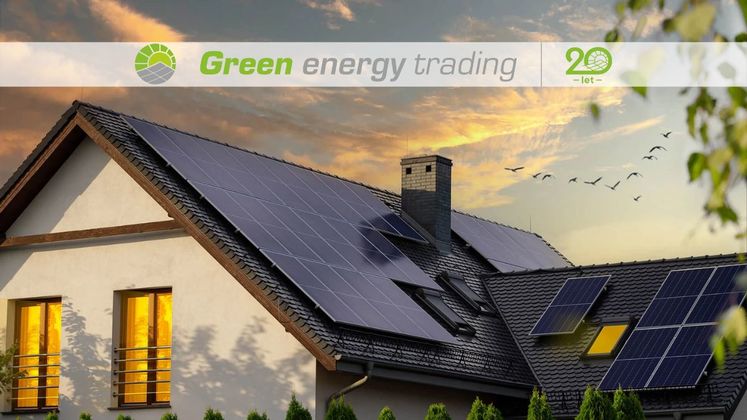Photovoltaics: frequently asked questions and answers
 21. 10. 2025
21. 10. 2025
Photovoltaics is a renewable and inexhaustible source of electricity. It does not require any fuel to produce electricity and has no moving parts. A photovoltaic power plant can therefore operate for a long time without supervision and with low maintenance requirements. Take a look at some of the frequently asked questions we receive.
How does solar energy work?
Solar energy works by converting energy from the sun into energy. Two forms of energy are obtained from the sun for our use: electricity and heat.
Both are produced using solar panels, which vary in size from panels on rooftops to ‘solar farms’ covering hectares of rural land.
Is solar energy a clean source of energy?
Yes, solar energy is a renewable and infinite source of energy that does not produce any harmful greenhouse gases – as long as the sun shines, energy will be released.
The carbon footprint of solar panels is already relatively small, as they have a lifespan of more than 25 years. In addition, the materials used in the panels are increasingly being recycled, so the carbon footprint will continue to decline.
When was solar energy discovered?
Solar energy was already being used by humans in the 7th century BC, when people used sunlight to start fires by reflecting the sun's rays onto shiny objects. Later, in the 3rd century BC, the Greeks and Romans used solar energy with mirrors to light torches for religious ceremonies.
In 1839, at the age of just 19, French physicist Edmond Becquerel discovered the photovoltaic (PV) effect while experimenting with a cell made of metal electrodes in a conductive solution. He found that the cell produced more electricity when exposed to light – it was a photovoltaic cell.
In 1954, PV technology was born when Daryl Chapin, Calvin Fuller and Gerald Pearson developed a silicon PV cell at Bell Labs – the first solar cell capable of absorbing and converting enough solar energy to power common electrical devices.
Today, satellites and spacecraft orbiting the Earth are powered by solar energy.
How exactly is electricity generated from solar energy?
Solar panels are usually made of silicon or another semiconductor material installed in a metal panel frame with a glass cover. When this material is exposed to photons of sunlight (very small particles of energy), it releases electrons and creates an electric charge.
This photovoltaic charge creates an electric current (specifically direct current, or DC), which is captured by conductors in the solar panels. This direct current is then converted by an inverter into alternating current (AC). Alternating current is the type of electric current used when you plug appliances into a standard outlet.
What is the difference between solar photovoltaic panels and solar thermal panels?
Solar photovoltaic panels generate electricity as described above, while solar thermal panels generate heat. Although the energy source is the same – the sun – the technology in each system is different.
Solar photovoltaics is based on the photovoltaic effect, in which a photon (the basic unit of light) strikes the surface of a semiconductor, such as silicon, and releases an electron. Solar thermal energy is less sophisticated and involves the direct heating of water (or other liquids) by solar radiation.
For domestic use, solar thermal panels are also installed on a sun-facing roof, where they heat water stored in a hot water tank, providing hot water and heating. On a larger scale, solar thermal energy can also be used in power plants.
What are solar farms?
Solar farms, also known as solar parks or solar fields, are large areas of land with interconnected solar panels spread over many hectares, which are used to simultaneously capture large amounts of solar energy. Solar farms are designed for large-scale production of solar energy, which is fed directly into the grid, unlike individual solar panels, which usually power a single house or building.
Can solar energy be produced on cloudy days?
Yes, it can – solar energy only requires a certain level of daylight to utilise the sun's energy. However, the rate at which solar panels generate electricity varies depending on the amount of direct sunlight and the quality, size, number and location of the panels used.
